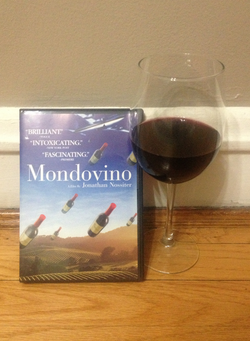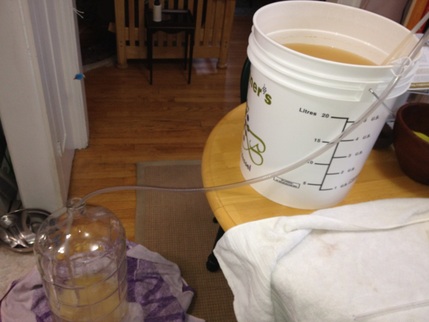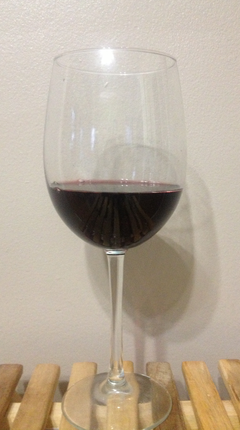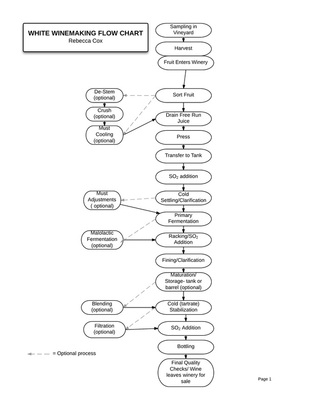
In my research for this post, I realized that there are really not that many great movies out there about wine. What gives?!
Anyhow, here’s the list of ones I find worth watching, for one reason or another. Starting with the best.
Sideways:
This is the best wine movie I've ever seen. It was nominated for several Academy Awards: best picture, supporting actor and actress, best director, and it won for best adapted screenplay. It’s darkly funny, it’s sad, and it makes wine seem totally sexy and mystical (which in reality, it both is and isn’t.) I don’t always agree with the opinions of the characters- I’ll take a Merlot over a Pinot Noir any day- but I really do love this movie.
It chronicles the adventures of sad sack novelist and wine snob Miles (Paul Giamatti) as he takes his best friend, a washed up and self-absorbed TV actor named Jack (played by Thomas Haden Church) wine tasting in central CA. The trip is a sort of last hurrah before Jack’s wedding. Lots and lots of crazy things happen to them. They drink a LOT of wine, meet some interesting people, and get themselves in and out of some sticky situations. If you haven’t seen it, you should. And if you have seen it, you should watch it again.
French Kiss:
Ok this one isn’t EXACTLY a wine movie. But since the whole thing revolves around Kevin Kline trying to start his own vineyard through less-than-honest fundraising practices, and has plenty of gorgeous shots of French wine country, I thought it should be included on the list. It’s a definite vintage rom-com, but Kevin Kline is a treasure. Always. And Meg Ryan really was America's sweetheart. It probably overly-romanticizes wine and viticulture (as many movies do,) but it is a good time nonetheless.
Bottle Shock:
This movie is a feel-good comedy that is loosely based on a true story. In 1976, “The Judgment of Paris,” a blind tasting judged by France’s preeminent wine experts, was held by a British expat wine lover and the owner of La Academie du Vin. At this time, American wines were not held in any sort of high regard and California was seen as very primitive and backwoods. Well, to the shock of the wine world, two Napa Valley wines won. Stag’s Leap (for some reason, not even mentioned once in this movie) won the red competition, and Chateau Montelena (the subject of the movie) won in the white category.
I’ll admit, this movie was the most disappointing of the ones I've seen in that it doesn’t really live up to its potential. In my opinion, it focuses too much on the relationships and character backstory (we really didn’t need a love triangle there) and the dialogue isn’t great. I’ve read some major criticisms of the acting, which I don’t know I agree with. Bill Pullman and Alan Rickman, are, as always, pretty darn good. And I think the rest of the actors were doing the best they could with the words they were given (Chris Pine’s wig, however, is a travesty. For reals. Awful. Distractingly bad.)
The scenes involving actual winemaking and work in the vineyard are pretty enchanting. I wasn’t really sucked in until Bill Pullman busted out his wine thief and gave Alan Rickman a taste of chardonnay.
Ultimately, it is an easy to watch, cute, feel good movie. The fact that it gives a little info about a true event is a plus, and it streams on Netflix, so why not? I definitely recommend opening a bottle of wine while you watch. (Though don’t feel bad if you can’t afford the roughly $11,300 for a bottle of the award-winning 1973 Chateau Montelena Chardonnay.)
Mondovino: This one is a documentary and wee bit long (over 2 hours.) It was apparently initially intended to be a miniseries (and has since been released as such in the UK) and not consumed in one sitting. This makes sense. It was a little hard on my modern attention span. Especially since much of it is not in English and you really have to pay attention to those subtitles! As a warning, it certainly doesn't do anything to dispel the snobby image of the wine world!
The filmmakers travel the world visiting winemakers of different sizes and passion levels. It is an interesting look at the globalization of wine and the effect that large producers have had on the world. Americans don’t necessarily come across too well, and it is insinuated that massive California producers like Mondavi/Opus One are to blame for a decline in variety and quality in consumer palates the world over. In fact, many of the proponents of globalization, be they American or French, seem to have been intentionally portrayed as either over-the-top stupid, or money obsessed. Which, may be true, but it made me embarrassed on behalf of the subjects.
The film romanticizes small French producers quite a bit. But perhaps with good reason (I, myself, would much rather drink a hand-crafted bottle of wine than a jug of mass-produced stuff. But this is a whole other post. I’ll go into it one day.) The overall message of the movie seemed to be that globalization is damaging local style and panache because consumers are now expecting a certain dull, uniform wine made popular by the mass producers.
All in all, the pace is slow, the material is interesting, the viewpoint is a little muddy, and I liked it. But I think it would’ve been better as a TV series.
A Good Year:
OK, so I admit, didn’t even watch this one. I was gonna… and then, the Rotten Tomatoes reviews scared me away. ("So why include it?" you ask. Well, in case YOU want to watch it and report back!) Anyone seen it? Is it as bad as they say?
OK. That’s it! If you feel passionately about my reviews (in any way) or have seen any fab wine-related movies that I’ve missed, share them in the comments!
Did you know?
A whole vineyard was basically kidnapped for ransom? Vanity Fair ran a fascinating story a few years ago called The Assassin in the Vineyard. I can’t WAIT for this one to be made into a movie. Somebody get on it!






 RSS Feed
RSS Feed